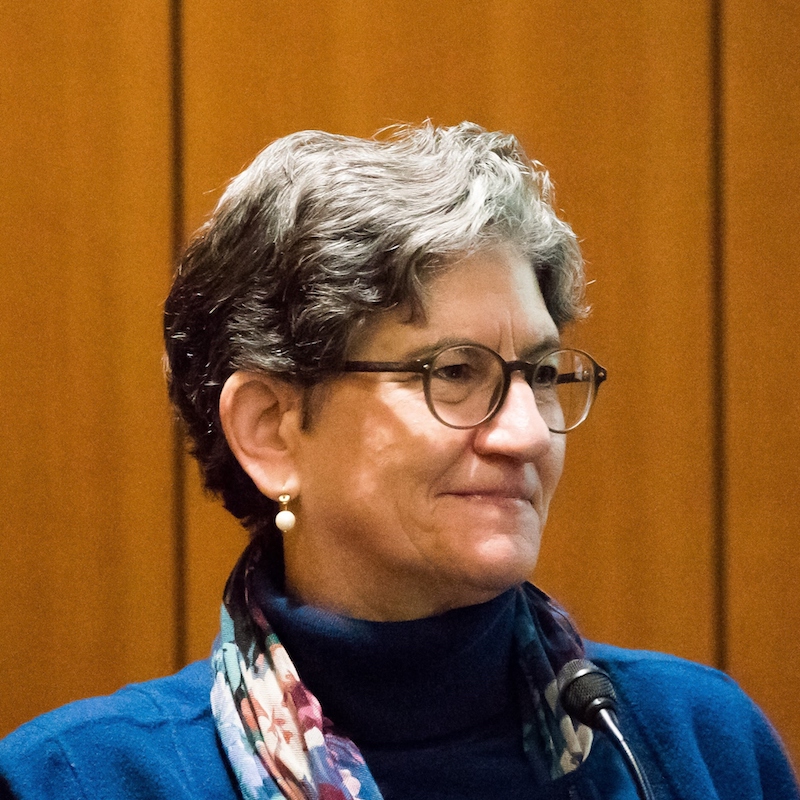
Uncertainties in value per statistical life estimates impact the extent to which COVID-19 policies yield net benefits.
Policymakers face the difficult task of balancing changes in COVID-19 risks with the risks of economic hardship in countless decisions, such as whether to require masks and social distancing or to reopen restaurants and schools. As a result, benefit-cost analysis has received unprecedented attention as the primary method that economists follow to investigate tradeoffs and inform policy choices systematically.
The approach that economists use to estimate the value of reducing the risk of death—the value per statistical life (VSL)—is frequently misunderstood, however. Some COVID-19 analyses rely on a population-average VSL estimate, often around $10 million, while others adjust VSL for life expectancy at the age of death. Understanding the underlying concepts and the uncertainty in these estimates is essential to informing policy choices. In some cases, uncertainty in the VSL will significantly affect the extent to which a policy yields net benefits; in others, however, the effect will be insignificant. Uncertainties in the mortality risk reductions and in the economic consequences attributable to the policy may outweigh uncertainties in the VSL estimates.
What is the value per statistical life? To value reductions in mortality risk, analysts must first estimate the risk change attributable to a policy within a defined period compared to conditions without the policy. The individual risk reduction—for example, 1 in 10,000—can then be multiplied by the number of individuals affected (1,000,000) to estimate the statistical cases averted by the policy—in this example, that is 100 expected deaths.
Under conventional economic assumptions, individual willingness to pay (WTP) is the appropriate measure of value for improvements from the status quo. WTP represents the rate at which individuals are willing to trade off spending on their own risk reduction against all the other things they could use that money to buy. Individuals demonstrate this willingness to pay often, for example, by spending more for a safer car or purchasing other protective equipment.
For an individual, VSL can be derived by dividing WTP by the risk reduction. A population-average VSL of $10 million indicates that the typical individual is willing to pay $1,000 to decrease the chance of dying in a given year by 1 in 10,000. Individual WTP also can be summed across individuals expected to accrue the risk reduction. If 10,000 people will experience a 1 in 10,000 risk reduction and are each willing to pay $1,000 for the risk change, the total value is $10 million (10,000 times $1,000), and one less person would be expected to die that year as calculated by 10,000 times 1/10,000.
Individual WTP, then, is the fundamental measure—the $1,000 in this case. The conversion to a $10 million VSL is simply for convenience.
Globally, many countries as well as organizations have developed recommended VSL estimates. In the United States, the U.S. Department of Health and Human Services (HHS), the U.S. Environmental Protection Agency, and the U.S. Department of Transportation have issued widely used guidance. When adjusted to 2019 dollars and income levels, the U.S. population-average values recommended by these three federal agencies are all about $10 million, a number that is consistent with recent work by W. Kip Viscusi that addresses publication selection bias in the underlying studies.
How does the age at death affect these values? Theory and empirical research suggest that the relationship between age and VSL is uncertain. The studies underlying the recommended population-average VSL estimates generally focus on the tradeoff between wages and occupational risks among working adults—excluding children, the elderly, and those who do not participate in the labor force for reasons other than age. The available research suggests that values for children may be as much as twice the values for middle-aged adults. Values for working age adults may follow an inverse-U pattern as they grow older, increasing in early adulthood, peaking in middle age, and then declining. Values for the elderly may increase, decrease, or remain the same. Most COVID-19 deaths occur among those over age 65, yet the appropriate VSL for this age group is very uncertain.
In a recent study with Ryan Sullivan and Jason F. Shogren, I compare the effects of three approaches often used to adjust for age: an invariant population-average VSL; a constant value per statistical life-year (VSLY); and a VSL that follows an inverse-U pattern, peaking in middle age. We find that when applied to the U.S. age distribution of COVID-19 deaths, these approaches result in average VSL estimates of $10.6 million, $4.5 million, and $8.5 million. The differences in these values is substantial enough to alter the conclusions of frequently cited analyses of social distancing.
Most federal agencies do not adjust VSL for the age of those affected. One exception is HHS, whose guidance recommends sensitivity analysis when risk changes disproportionately accrue to the very old or the very young.
In addition to reflecting uncertainty about the relationship between VSL and age, this general lack of adjustment reflects public opposition to using different values for individuals with different characteristics. This opposition stems at least in part from misinterpretation of the VSL terminology, as some people believe it reflects the value the government places on saving an individual’s life rather than the value that individuals themselves place on changes in their own risks.
Given this misunderstanding, it is easy to see why people might oppose any approach that appears to give greater or lesser weight to individuals with different characteristics. But even if these values are correctly interpreted, these adjustments emphasize the need to consider the distribution of the impacts as well as net benefits—that is, who gains and who loses.
What other characteristics affect these values? Researchers sometimes overlook additional characteristics of COVID-19 deaths that may increase or decrease the value of reducing these risks—examples include other individual characteristics such as income or wealth, and risk characteristics such as morbidity prior to death.
There is substantial evidence that individual WTP per unit of risk reduction, and therefore VSL, increases with income. This means that, to the extent that COVID-19 is decreasing earnings or disproportionately affecting the poor, the VSL is likely to also decrease. Federal agencies generally do not adjust VSL for within-population income differences, however, due to equity and other concerns. Whether this approach is in fact equitable is debatable. For example, if the costs of a policy fall primarily on the poor, but a population-average VSL is used to value benefits, the policy may appear cost beneficial even though the poor bear costs that may exceed the value they place on the benefits they receive.
Decisions will be better informed if instead the benefit-cost analysis is accompanied by distributional analysis that explicitly addresses both who bears the costs and who receives the benefits. The need for subsidies, such as unemployment assistance or other programs to address inequities, will then be more apparent.
The variation in VSL across types of risks is uncertain but may increase the values appropriate for COVID-19. For example, the occupational risks that underlie many VSL estimates lead to immediate death from injury. COVID-19 deaths may be preceded by a longer period of pain and suffering, including severe breathing difficulties and ventilator use. In addition, the characteristics and magnitudes of many risks addressed in the VSL literature are relatively well understood, but COVID-19 risks are not. Some research suggests that risks perceived as more dreaded and ambiguous, and less controllable and voluntary, may increase VSL by as much as a factor of two.
In total, these and other attributes of COVID-19 affect the VSL in ways that are likely counterbalancing to an unknown extent. To inform decisions, analysts should explore the sensitivity of their results to key assumptions both qualitatively and quantitatively. Reporting the break-even VSL—the value at which benefits equal costs—can also provide useful insights.
What are the implications of these uncertainties? Benefit-cost analysis is a well-established and widely used approach for informing policy decisions. It has served this purpose in the COVID-19 context, emphasizing the gravity of the crisis and highlighting key tradeoffs. The goal of these analyses should be to aid policymakers in understanding the degree to which benefits exceed costs, given uncertainties in the estimates of the change in risks, the economic costs, and the VSL estimates. At times, uncertainty in the VSL may not significantly affect the magnitude of the net benefits or change whether the benefits of a policy exceed its costs. In other cases, this uncertainty may have important ramifications that decision makers should consider.
In addition, it is essential to accompany benefit-cost analysis with analysis of the distribution of the impacts, as many government and other guidelines require. The extent to which those who are disadvantaged are disproportionately affected by both COVID-19 risks and the economic consequences of policy actions must be taken into account in decision making.
This essay is part of a series entitled Analyzing COVID-19 Policymaking.




